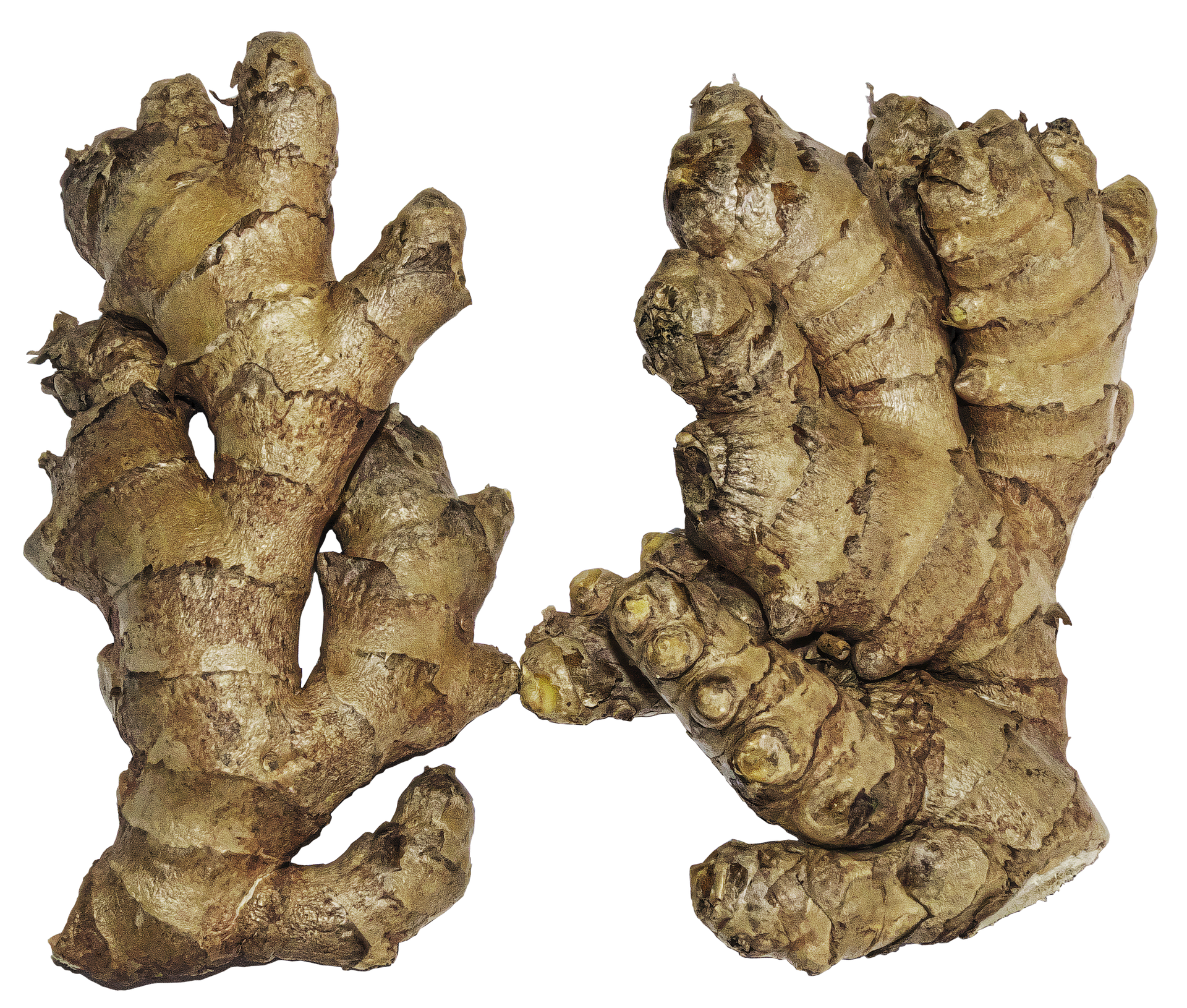The importance of ginger in Filipino and Thai cuisine
The Philippines and Thailand share not only a rich cultural history but also a love for fresh ginger in their cuisine. Both countries have a long-standing tradition of using ginger in their dishes for its unique flavor and health benefits. The use of ginger in these countries goes beyond just culinary purposes, as it also holds significance in traditional medicine and cultural practices. In this article, we will explore the connection between the Philippines and Thailand through their mutual love for fresh ginger, its role in their cuisine, and the cultural significance it holds in both countries. We will also provide tips on how to cook with ginger and where to find fresh ginger in the Philippines and Thailand.

Introduction to Philippines and Thailand's culinary connection
The Philippines and Thailand may be separated by a few thousand miles, but their culinary connection runs deep. Both countries share a love for bold flavors and fresh ingredients, resulting in a unique blend of flavors and dishes that showcase their culinary heritage.
A brief history of culinary exchange between the Philippines and Thailand
The Philippines and Thailand have a long history of cultural exchange, and this includes their culinary traditions. Both countries have been influenced by the culinary practices of their neighboring countries as well as colonizers who have left their own mark on the local cuisine.
The Philippines, for example, has been colonized by Spain, the United States, and Japan, while Thailand has had a long-standing cultural exchange with neighboring countries such as China, India, and Malaysia. These influences have resulted in a diverse culinary heritage that is much loved by locals and tourists alike.

The importance of ginger in Filipino and Thai cuisine
One ingredient that is common in both Filipino and Thai cuisine is ginger. Ginger has been a staple in both countries' culinary practices for centuries and is used in a variety of dishes due to its unique flavor and health benefits.
In the Philippines, ginger is used in a variety of dishes, including adobo, sinigang, and tinola. It adds a unique heat and zing to the dish, which complements the other ingredients perfectly. In Thailand, ginger is a key ingredient in many curries, soups, and stir-fries, giving the dishes a distinct aroma and flavor.
The role of ginger in Filipino and Thai cuisine
What are the similarities and differences between Filipino and Thai ginger dishes?
Although both countries use ginger in their dishes, there are some key differences between how it is used. In the Philippines, ginger is often used as a marinade, seasoning, or for making ginger tea. In contrast, in Thailand, ginger is used as a core ingredient in many dishes, including curries and stir-fries.
Ginger is also used differently in Filipino and Thai cuisine due to the differences in cooking practices. Filipino cuisine often involves slow-cooking methods, while Thai cuisine's focus on stir-frying and quick-cooking methods.

How do Filipinos and Thais use fresh ginger in their cooking?
Filipinos use fresh ginger to add flavor and aroma to their dishes. It is also used for its medicinal properties, as ginger is known for its anti-inflammatory and digestive properties. In Thai cuisine, fresh ginger is used to add flavor and aroma to stir-fries, soups, and curries.
Health benefits of consuming fresh ginger
The nutritional value of ginger
Fresh ginger is a good source of vitamins and minerals, including vitamin C, magnesium, and potassium. It is also low in calories, making it an excellent addition to a healthy diet.
The medicinal properties of ginger
Ginger has long been used for its medicinal properties, particularly for its anti-inflammatory and digestive benefits. It has also been found to help reduce nausea and motion sickness, making it a popular remedy for those experiencing morning sickness or motion sickness.

Traditional ginger recipes from the Philippines and Thailand
Overview of traditional Filipino ginger recipes
In the Philippines, ginger is used in a variety of dishes, including adobo, sinigang, and tinola. Adobo is a popular dish that involves marinating meat in a sauce made with soy sauce, vinegar, and ginger. Sinigang is a sour soup that includes vegetables, meat, and ginger. Tinola is a chicken soup that uses ginger to add flavor and aroma.
Overview of traditional Thai ginger recipes
Thai cuisine is known for its use of fresh herbs and spices, and ginger is no exception. Thai ginger recipes include ginger curry, ginger stir-fry, and tom kha gai, a coconut milk-based soup that includes ginger, lemongrass, and other Thai herbs and spices. These dishes showcase the unique flavor and aroma that ginger adds to Thai cuisine.

Exploring the cultural significance of ginger in both countries
Ginger is a common ingredient in both Filipino and Thai cuisine, but its cultural significance goes beyond just adding flavor to dishes. In traditional medicine, ginger has been used for centuries to treat a variety of ailments. In the Philippines, ginger tea is commonly consumed to alleviate colds and digestive issues, while in Thailand, ginger is often used to aid with arthritis and nausea. Ginger's medicinal properties have also made it a popular ingredient in folk remedies and healing practices in both countries.
The role of ginger in Filipino and Thai traditional medicine
In the Philippines, ginger has long been recognized for its healing properties. It is commonly used in traditional medicine to treat colds, coughs, and sore throats. Ginger tea, also known as salabat, is a popular home remedy for digestive issues such as upset stomach and indigestion. In Thai traditional medicine, ginger is used for its anti-inflammatory properties and is often used to treat arthritis and muscle pain. Ginger is also believed to help with digestion and alleviate nausea, making it a popular ingredient in Thai cooking and traditional remedies.
The cultural significance of ginger in Filipino and Thai folklore
In both Filipino and Thai folklore, ginger is said to have magical properties. In the Philippines, ginger is believed to ward off evil spirits and is often placed under a newborn baby's pillow to protect them from harm. In Thailand, ginger is believed to bring good luck and is often hung in homes or worn as a charm. Ginger is also a popular offering in Buddhist temples and is believed to bring merit to those who make the offering.

How to use fresh ginger in your own Filipino and Thai cooking
Fresh ginger is a versatile ingredient that can add flavor and health benefits to your Filipino and Thai recipes. Here are some tips for cooking with fresh ginger:
Tips for cooking with fresh ginger
- Use a sharp knife to peel the skin off the ginger root. If you don't have a knife, you can also use a spoon to scrape the skin off.
- Grate or mince fresh ginger for a stronger flavor. Thinly sliced or julienned ginger will have a milder flavor.
- When cooking with ginger, add it early on in the cooking process to infuse the flavor into the dish.
- To release the full flavor of ginger, lightly crush or bruise it before adding it to the dish.
- Don't be afraid to experiment with the amount of ginger you use - start with a small amount and add more as needed.
Popular ginger dishes you can try at home
In the Philippines, ginger is a common ingredient in dishes such as tinola (a chicken soup), adobo (a savory stew), and sinigang (a sour soup). In Thai cuisine, ginger is often used in stir-fries, soups, and curries. Some popular Thai dishes that use ginger include tom kha gai (coconut chicken soup) and pad prik king (stir-fried meat with curry paste and ginger).

Where to find fresh ginger in the Philippines and Thailand
If you're looking to incorporate fresh ginger into your Filipino or Thai cooking, here are some of the best places to find it:
The best places to buy fresh ginger in the Philippines
- Wet markets: Wet markets are a common source of fresh produce in the Philippines. Look for stalls that specialize in herbs and spices for the best selection of fresh ginger.
- Supermarkets: Most supermarkets in the Philippines carry fresh ginger in the produce section.
- Specialty stores: Some specialty stores, such as health food stores or organic markets, may carry fresh ginger as well.
The best places to buy fresh ginger in Thailand
- Fresh markets: Fresh markets, or talat, are a common source of fresh produce in Thailand. Look for stalls that specialize in herbs and spices for the best selection of fresh ginger.
- Street vendors: You may also be able to find fresh ginger from street vendors selling produce.
- Supermarkets: Most supermarkets in Thailand carry fresh ginger in the produce section. Some may also carry pre-packaged ginger paste or grated ginger for convenience. In conclusion, the love for fresh ginger in the Philippines and Thailand unites the two countries in a unique way. Whether used in cooking or as part of traditional medicine, ginger plays an important role in both cultures.
By exploring and embracing these cultural connections, we can appreciate the rich heritage and culinary traditions that the Philippines and Thailand have to offer. So next time you're in the kitchen, don't forget to add some fresh ginger to your Filipino and Thai inspired dishes!

Frequently Asked Questions
What are some popular Filipino ginger dishes?
Some popular Filipino ginger dishes include tinola, a chicken and vegetable soup, and adobo, a savory stew made with meat and soy sauce.
What are some popular Thai ginger dishes?
Some popular Thai ginger dishes include tom yum soup, a spicy and sour soup with shrimp, and ginger fried rice, a fragrant and flavorful rice dish.
What are the health benefits of consuming fresh ginger?
Fresh ginger is known for its anti-inflammatory and antioxidant properties, and has been shown to help with nausea, digestion, and reducing muscle pain.
Where can I buy fresh ginger in the Philippines and Thailand?
Fresh ginger is widely available in local markets and supermarkets in both the Philippines and Thailand. You can also find fresh ginger in specialty Asian food stores or online.